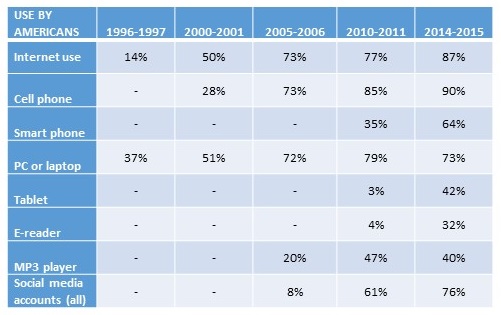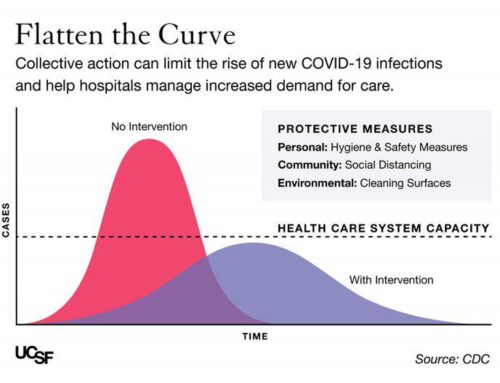Between 1920 and 1950, the number of registered vehicles on the roads in the U.S. quintupled. Not surprisingly, the number of motor vehicle fatalities almost tripled.
New technology means more crashes. Human beings need time to adjust to new technology. Adjustments to our thinking patterns, our infrastructure, our laws, our social norms.
It’s no wonder we’re all struggling to manage our electronic lives. It’s easy forget that the human species has only been dealing with these new technologies for about a nanosecond.
Email, social media, the internet, PCs, smart phones, tablets, laptops, MP3 players, game consoles – for most Americans, none of it existed just 20 years ago.
While the details vary across age, race, and class, the average American now spends over 3 hours a day on social networking. Most U.S. workers spend 6 hours a day dealing with email. Outside the office, fast-food workers and retail clerks are staring at computers all day, too.
Research has shown our brains are hard-wired to react to that “ping” announcing a new email has arrived, or that someone Likes our post. This produces a “dopamine loop,” a constant stimulation of our brain’s dopamine system. It’s literally addictive. It exhausts us, and degrades our attention span and our focus. This is why extended use of email and social media undermine productivity and real-time social interactions with the human beings who are just down the hall. Or sitting at the dinner table with us.
The latest bad news is that the physical postures we assume when interacting with some devices may be affecting not only our physical health, but also our mental health. Hunching over small screens – smartphones, E-readers, and tablets in particular – causes our mood to shift, lowering self-esteem, impairing memory, and increasing the risk of clinical depression.
Is it even possible to manage this deluge without completely unplugging?
The good news is, yes, we can! Three basic steps:
- Acknowledge and accept that email and social media affect our brains in ways that can’t be managed with mere “self-discipline.”
- Our reactions are hard-wired, so we need a plan that interrupts the cycle.
- Make a plan that the family or the office agrees to and executes together.
While it’s true you can execute some positive changes on your own, the problem is, you’ll probably get push-back from those around you who are still caught in the dopamine loop. The odds of success go way up when we humans do things in groups. For example, if the whole family agrees that in a true emergency you will call each other rather than text, everyone will feel less anxious about turning off text notifications. It’s equally important that a workplace culture has agreed-upon norms for use of email and other communication forms.
If you do have to go it alone, inform everyone of your new rules of engagement. “I check email at 8AM, 12 Noon, and 3PM.”
The easiest and most practical tactics I’ve absorbed from my reading are:
- Turn off all notifications on all devices. No pings, dings, ringtones, or bells.
- Set specific times of the day when you will open – and close – email accounts and social media accounts.
- Close your email and social media accounts entirely when not in use.
It will be difficult at first, but hold on. It’s worth it. Your body and your brain will thank you.
***
I found these short articles particularly helpful.
Effects of hunching on mood
The surprising and powerful links between posture and mood
Your body language shapes who you are
Getting a handle on social media
Why we’re all addicted to texts, Twitter and Google
3 productive ways to limit your social media
Taming email to increase your productivity
Effective E-mail communication
End the tyranny of 24/7 email
Limit the time you spend on email
6 limiting beliefs about email that kill your inbox productivity
Table above compiled from Pew Research Center and U.S. Census.







